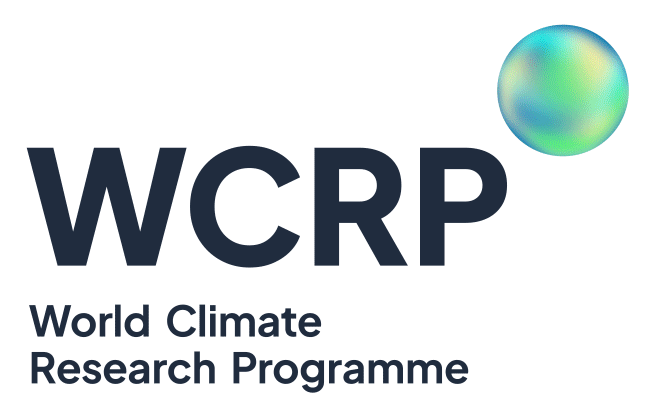Recommendations from CLIVAR basin panels - Atlantic
The CLIVAR basin panels have been asked to provide WGOMD with input on ocean metrics to evaluate model performance in terms of ocean processes occurring in the different ocean basins. Return to main REOS Metrics page.
 |
Metrics for the Atlantic Ocean
Datasets useful for model tests or comparisons
(H. Bryden)
- Baroclinic transport through Drake Passage (ref to bottom).
- Florida Straits transport.
- Atlantic overturning at 25N: 0-1000m, 1000-3000m, 3000-5000m transports reflecting net northward flow, UNADW southward flow and LNADW southward flow. The Rapid array should provide soon a time series of subannual/interannual variability.
- Variability in intemediate (and deep) water properties Potential Temperature-Salinity-Oxygen.
- Changes in properties and circulation from IGY to WOCE.
Metrics of Atlantic Climate Variability
(T. Delworth, W. Johns, D. Wright, D. Marshall and R. Sutton)
Action:
Provide inputs to WGOMD on metrics and indices of climate variability in the Atlantic sector to be used for model-model and model-data comparison studies. The same group is tasked to jointly identify and/or develop model experiments to explore MOC responses and sensitivity.
Scope:
Initial focus on the MOC and basin-scale water mass properties as the most important oceanic features.
Purposes of metrics:
-Comparison of MOC behaviour between different models
-Comparison of MOC behaviour between models and observations
-Detection of climate change in MOC and water mass properties
Purposes of model experiments:
-Investigate the mechanisms responsible for MOC variability and MOC response to forced changes, including issues of MOC stability, in a variety of (coupled and uncoupled) models.
-Evaluate the extent to which MOC behaviour in a variety of models is likely to be realistic/unrealistic.
-Identify key model requirements for realistic/adequate simulation of MOC variability and change. (The appropriate definition of "realistic/adequate" will depend on specific purpose.)
-Identify the degree to which variability in water mass properties are consistent between different models and how this variability compares with that seen in reality.
- Metrics for model-data comparison studies
- Metrics for model-model comparison studies
- Model Experiments
Metrics for model-data comparison studies
a. Curry and McCartney baroclinic transport index (store the integrated potential energy anomalies separately)
b. SST gradient between North and South Atlantic (how do we interpret this?)
c. Florida Strait transport.
d. Upstream "head" for deep Greenland Sea waters overflowing the Iceland-Faroe-Scotland sills.
e. Zonal average of monthly mean surface temperature and salinity as functions of latitude.
f. Annual or decadal mean heat and freshwater contents as a function of latitude (above and below 1000m?) - the info required to determine this is probably saved in any case. set).
g. A measure of Gulf Stream position [perhaps the area north of Cape Hatteras and west of the tail of the Bank that lies between the 1000m isobath and the position of maximum annual mean density gradient at 300m (or some other measure of GS position)]
h. A model analogue for the Bermuda hydrographic timeseries.
i. T, S and volume of Labrador Sea water (need to check with observationalists to see how the latter should be defined)
j. others?
Metrics for model-model comparison studies
a. Ocean-only and coupled models:
i. Heat and freshwater transports as a function of latitude and time (suggest monthly resolution).
ii. Timeseries of MOC at 48N, 26.5N, 10N (MOVE/GAGE), 10S, 30S (should not ignore the equatorial zone or the South Atlantic). Timeseries of T-S anomalies in key water mass transformation regions (Labrador Sea, Irminger Sea) and in Deep Western Boundary Current regime starting at 35N and along meridional sections.
iii. Heat and freshwater transports/exchanges through specific passages. For example:
1. Canadian Archipelago (hopefully can be compared to ASOF results)
2. Denmark Straits
3. Iceland-Faroe-Scotland ridge system (subdivided if desirable)
4. Straits of Gibraltar
iv. Max and min area and volume of sea ice in N. Atlantic and Arctic.
v. Measure of errors in simulated temperature and salinity. One method would be to compute the RMS error over the spatial domain of the Atlantic. This could be computed as a function of depth, or as one number over some depth range. Note that this is not a measure of variability, but may be relevant since variability can be a function of the base state. Perhaps there is a need to define a specific (but minimal) set of diagnostics to best characterise the MOC mean state.
b. Coupled models could also include:
i. standard deviation of time series of quantities in i-iii above (spectra would be even better, but perhaps too much to ask) - why not
ii. RMS error of simulated SST and SSS over what domain? What exactly does this tell us about the MOC?
iii. Some space-time decomposition of dominant patterns of variability would be nice, but probably this is too much to include here.
Model experiments
a. Sensitivity to horizontal resolution of processes relevant for MOC variability and change. One such experiment could focus on the dependence on resolution of signal propagation along the western boundary.
SIDE COMMENT: This will be a difficult issue to address in complex coupled models, for which changing resolutions is a major task. Perhaps simple coupled models could be used here, for example, OGCMs coupled to EBMs of various flavors. There is a large group of such model users that could be entrained - the first task is to agree on an experimental design that could sensibly be applied with a range of models.
b. Adjustment of models to surface perturbations. One such experiment is already underway; there is an existing CMIP project to examine the response of coupled models to imposed freshwater forcings, and to CO2 increases. Another potential experiment could be the response of models to perturbations associated with stronger or weaker NAO states, or to altered NAO spatial structures.













